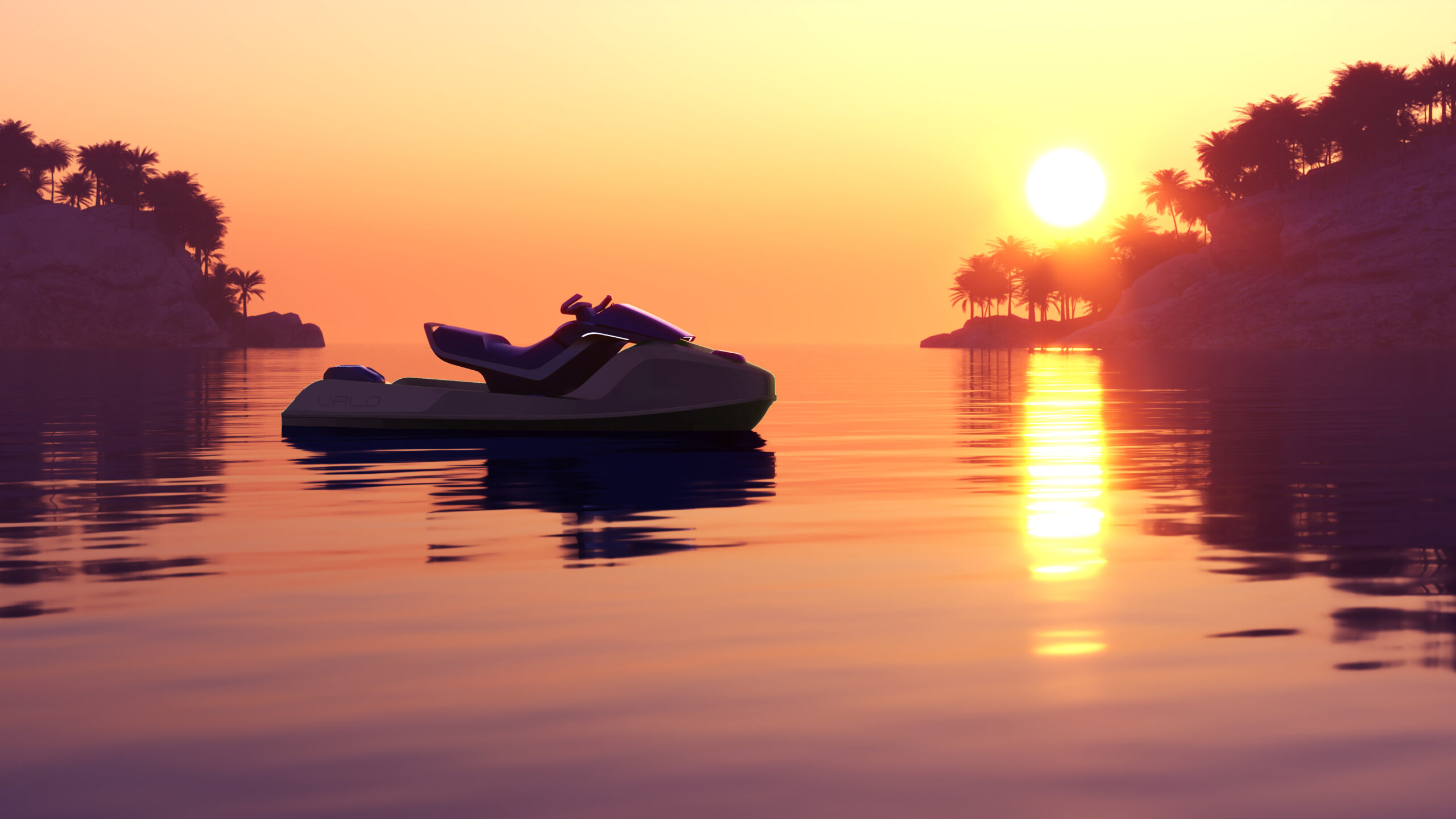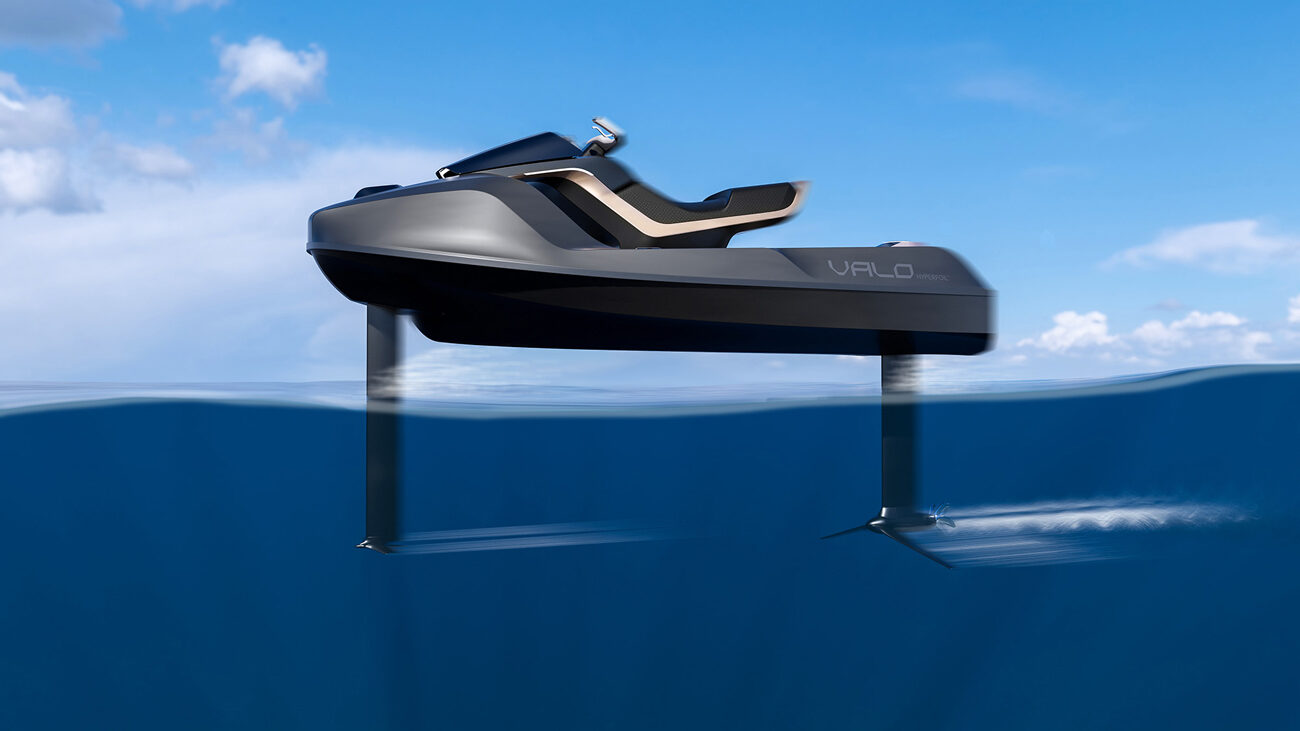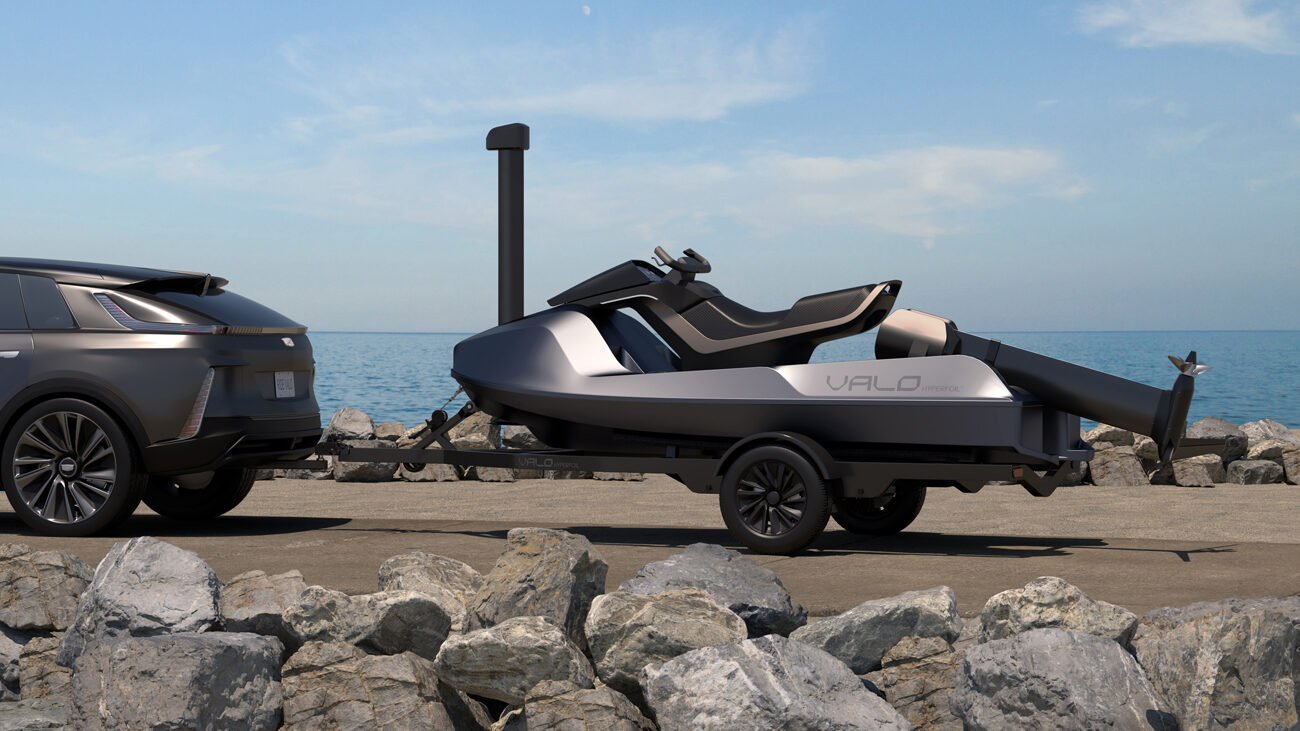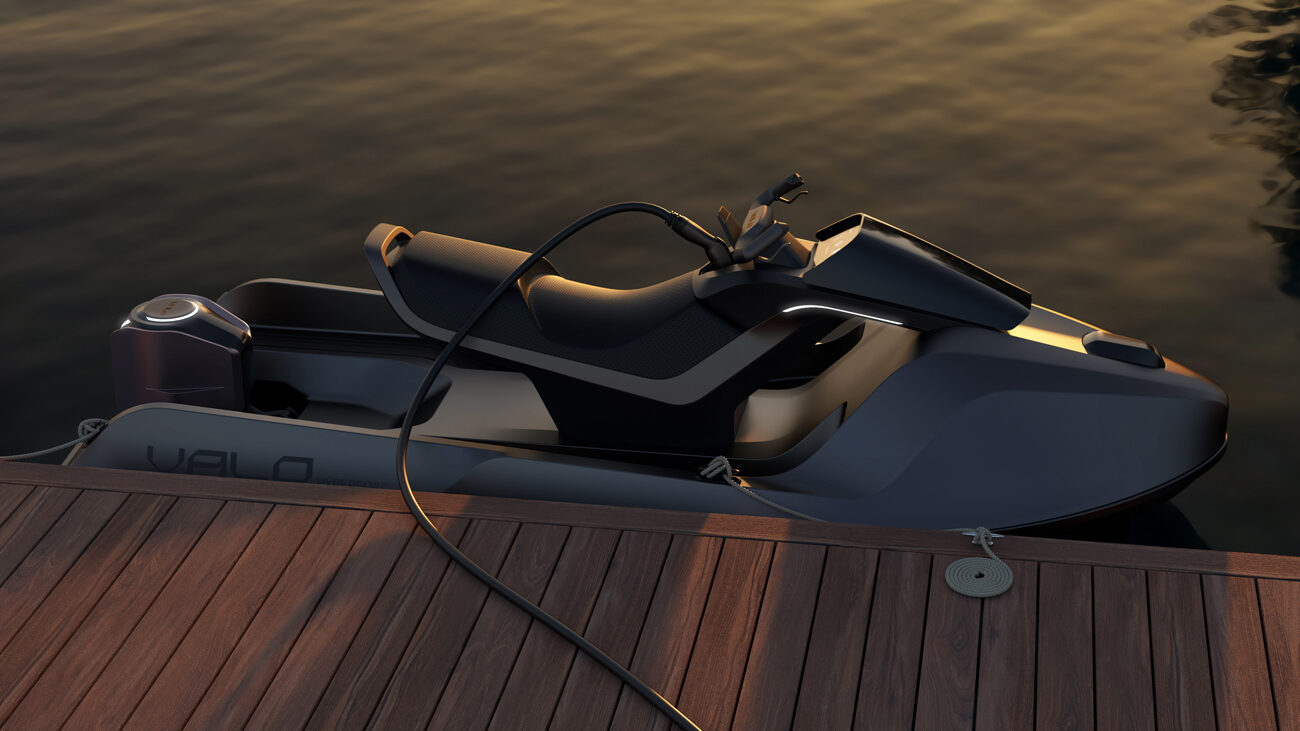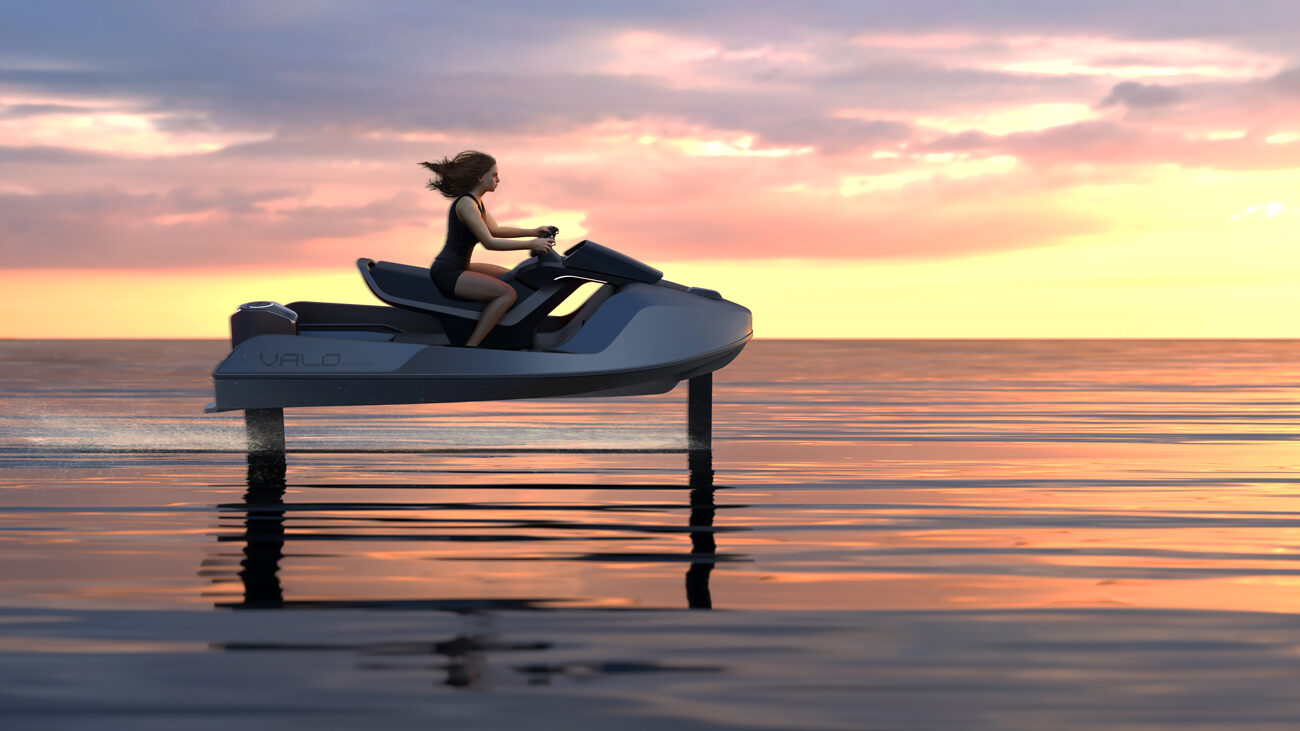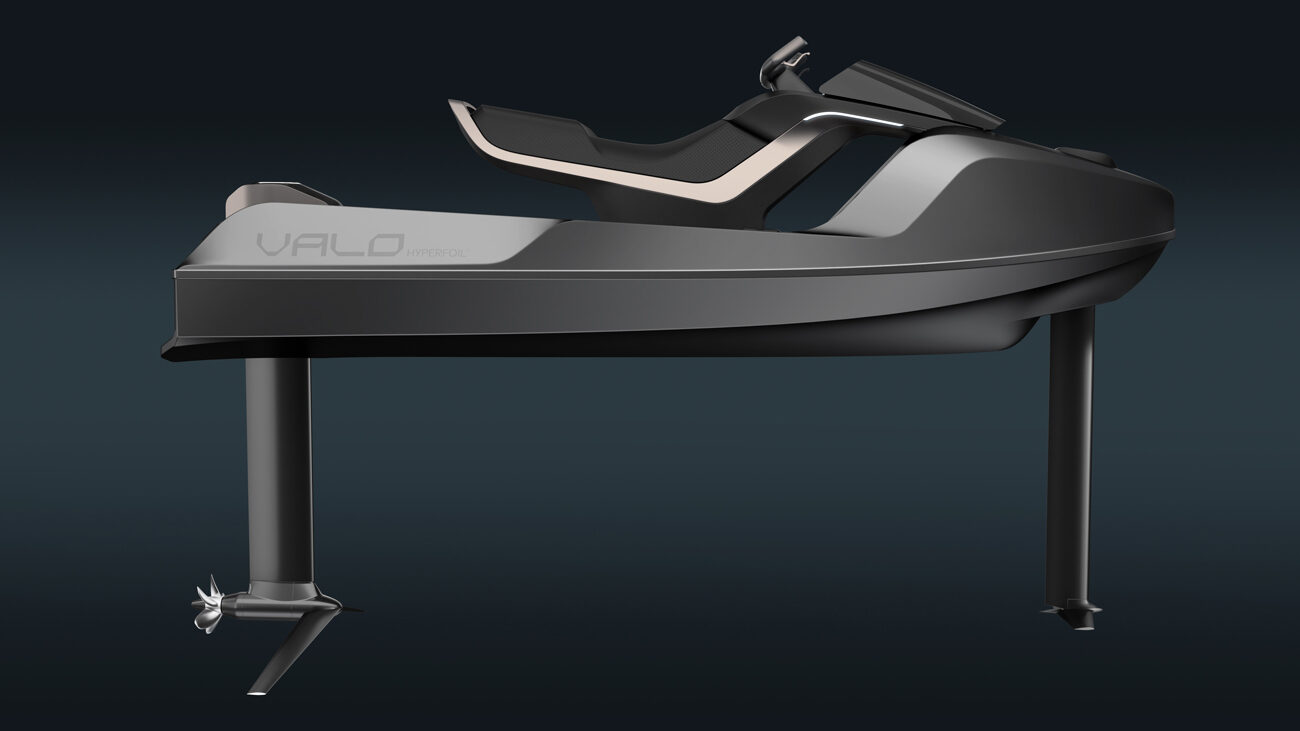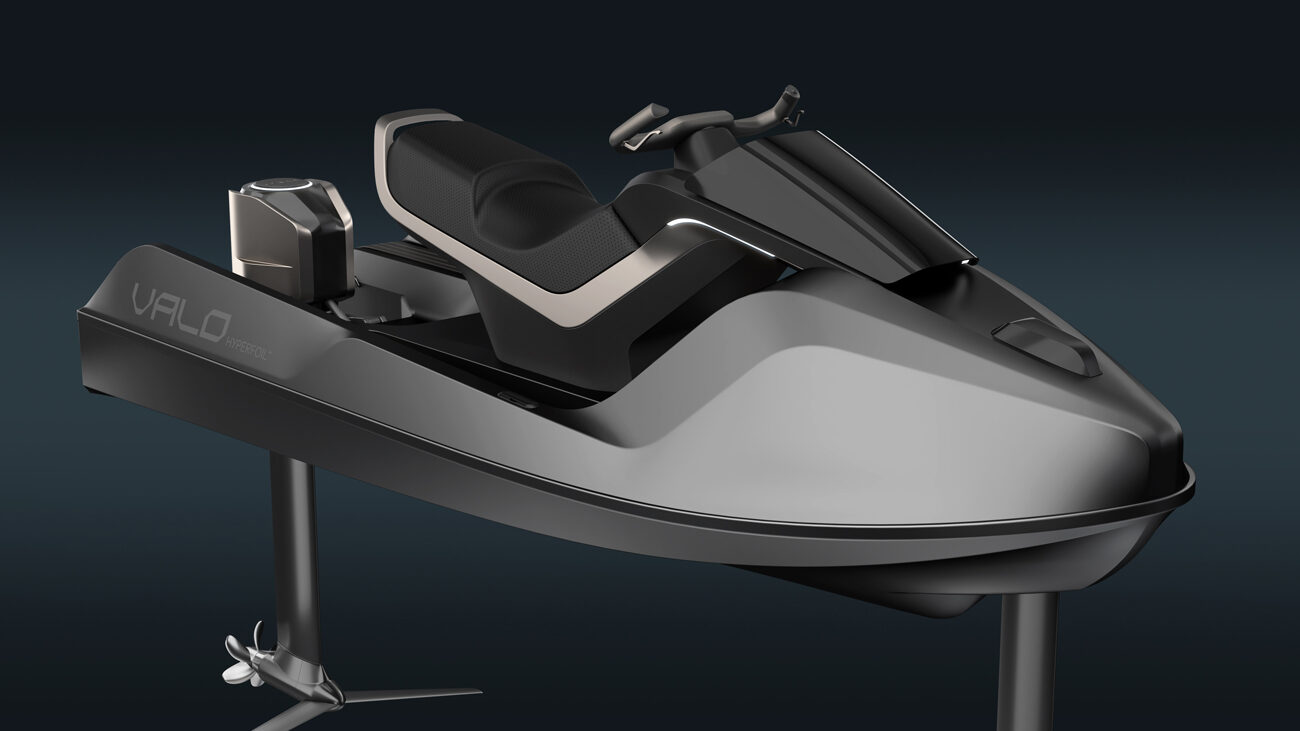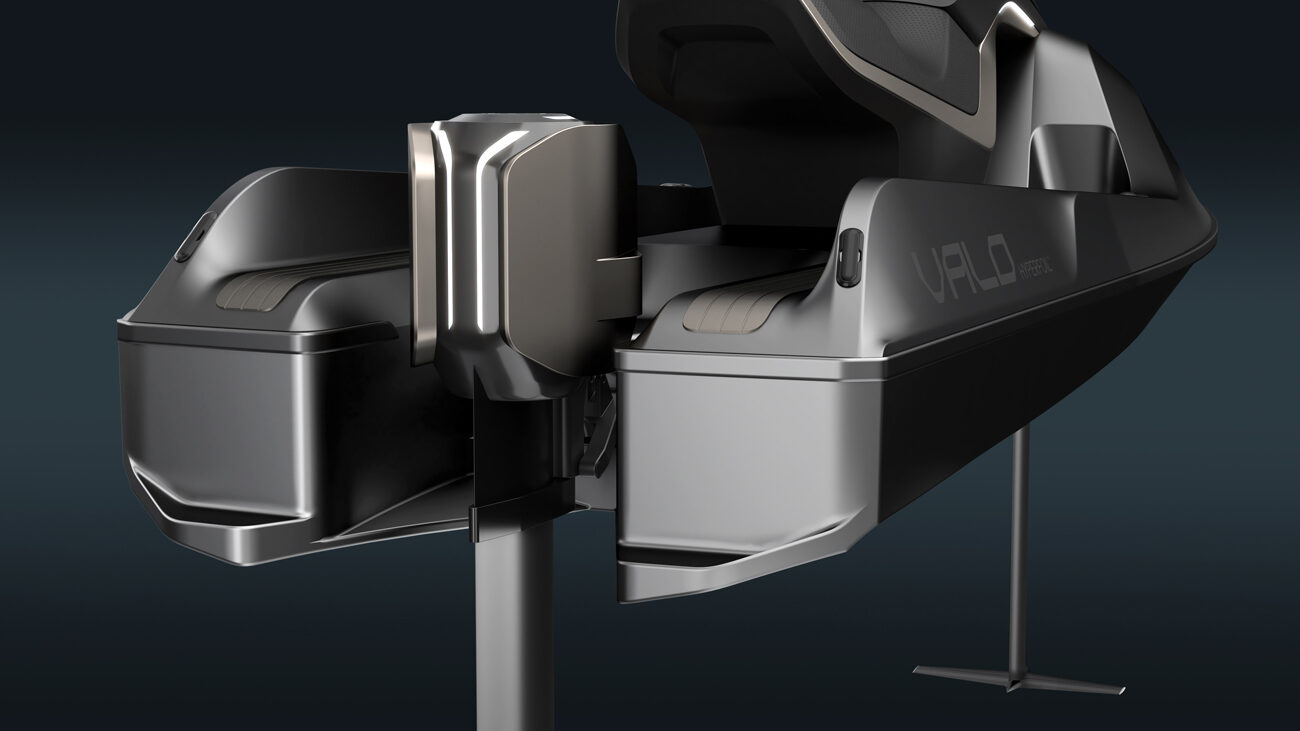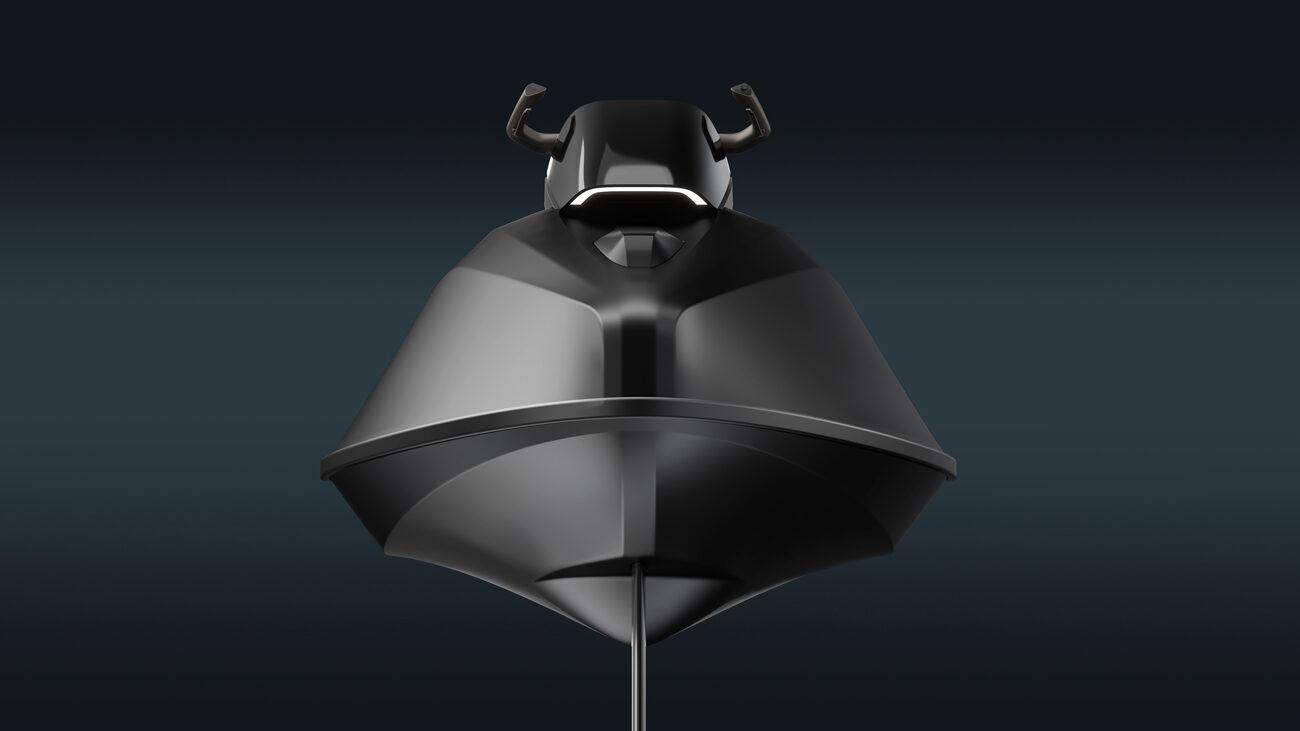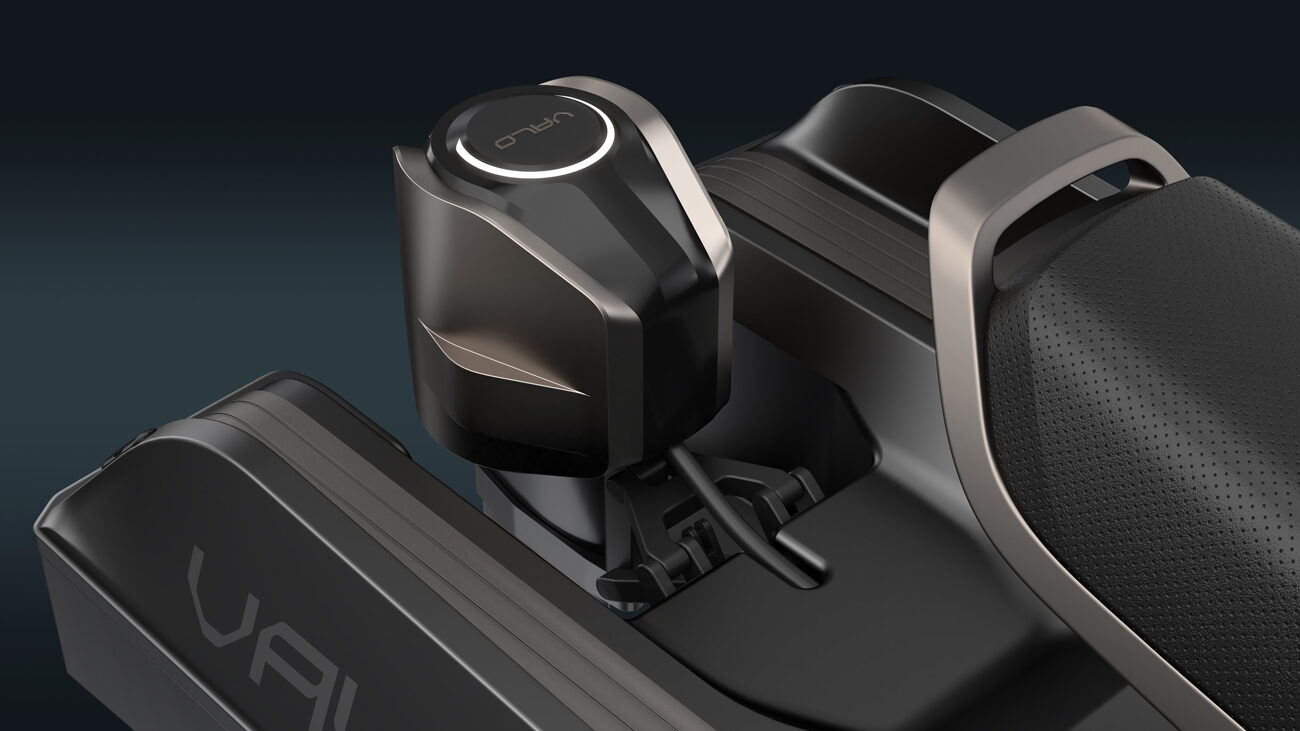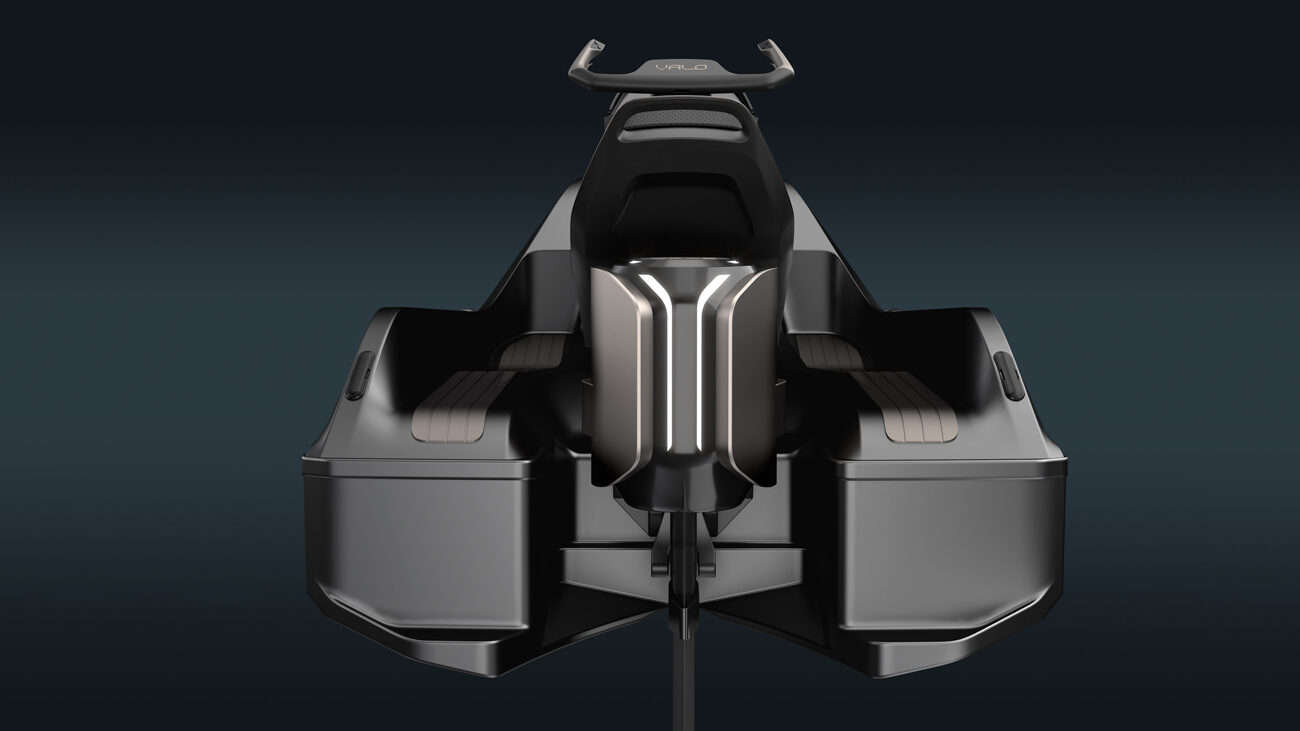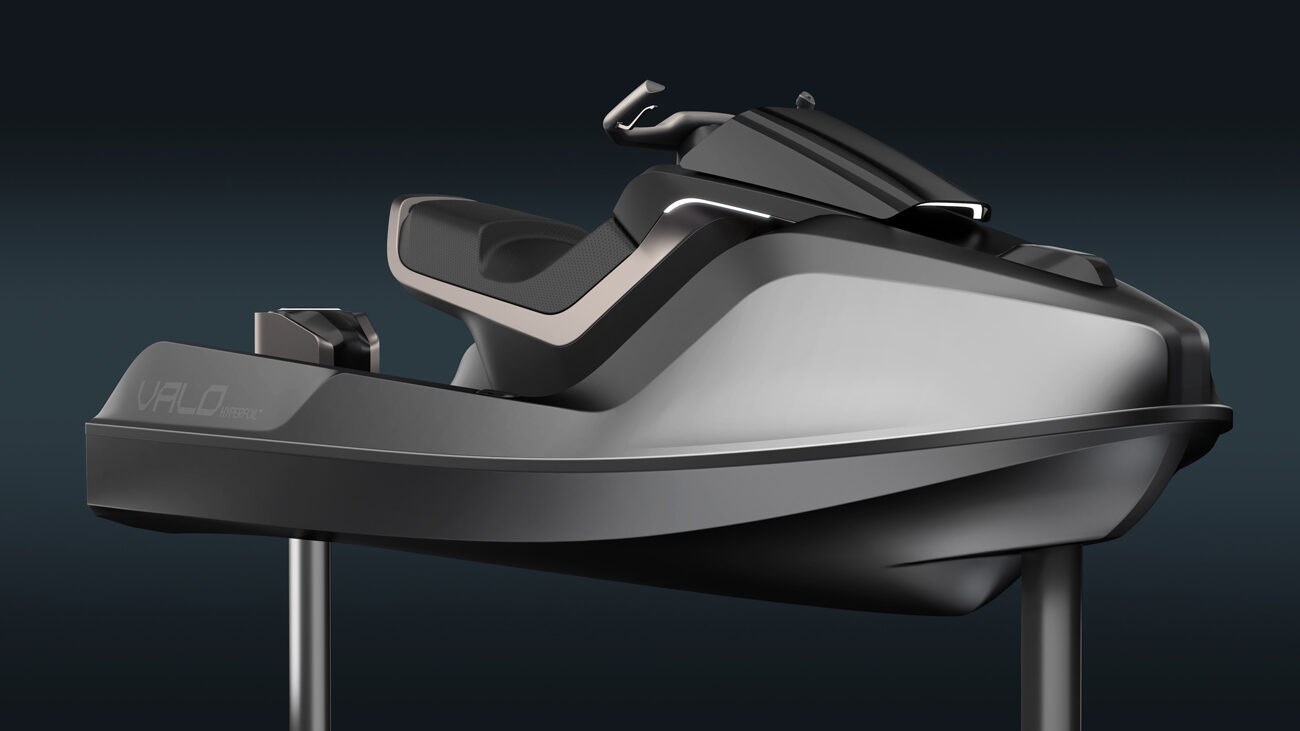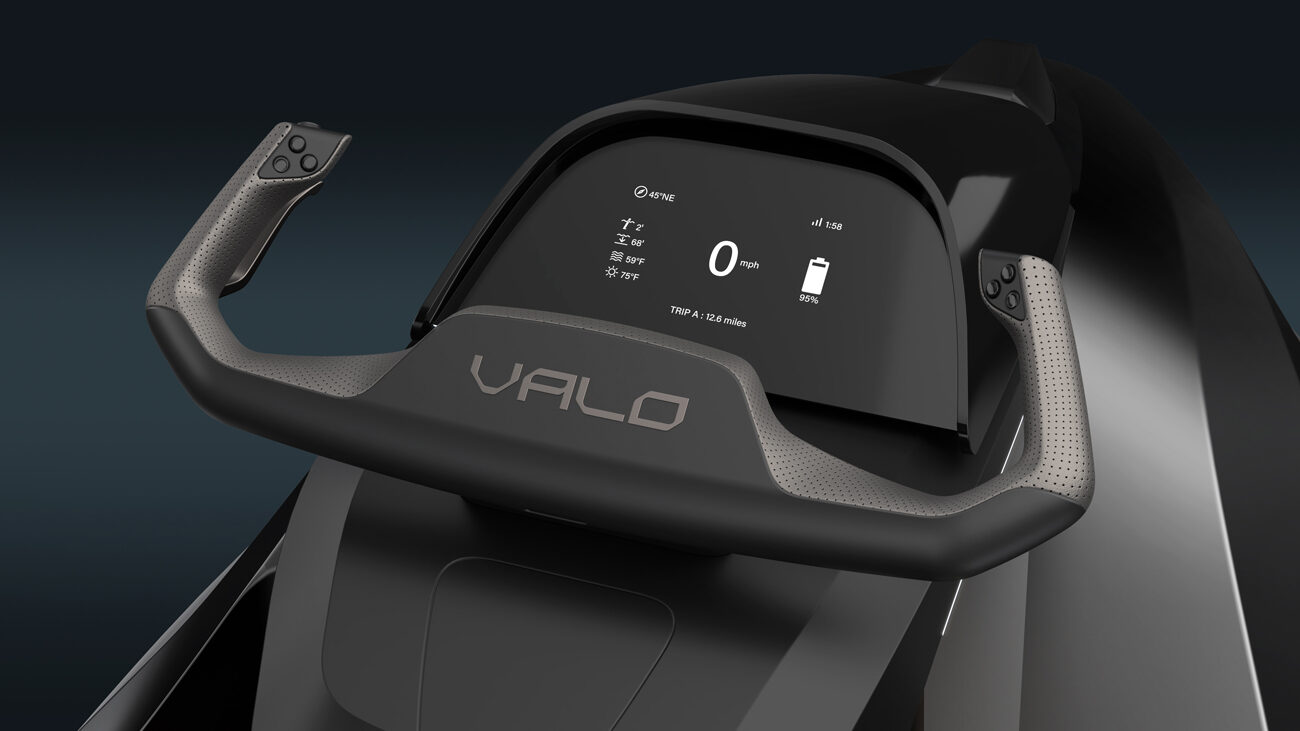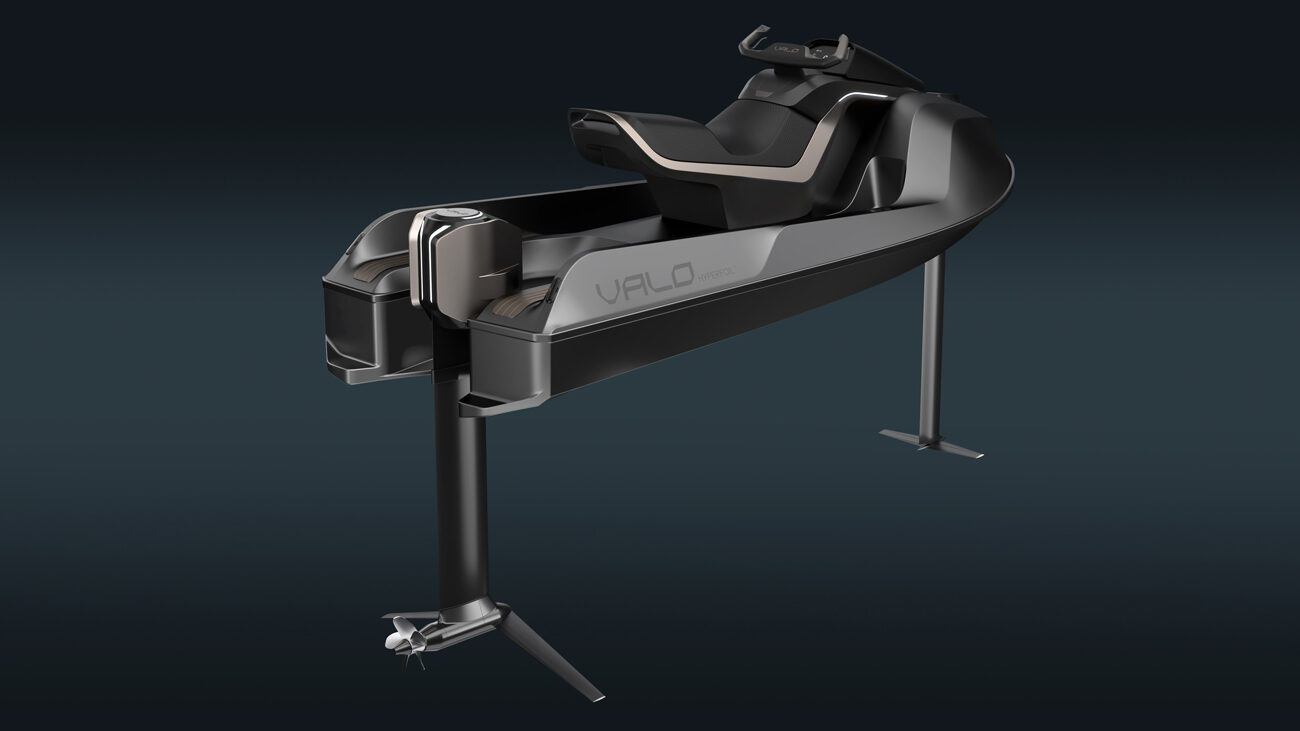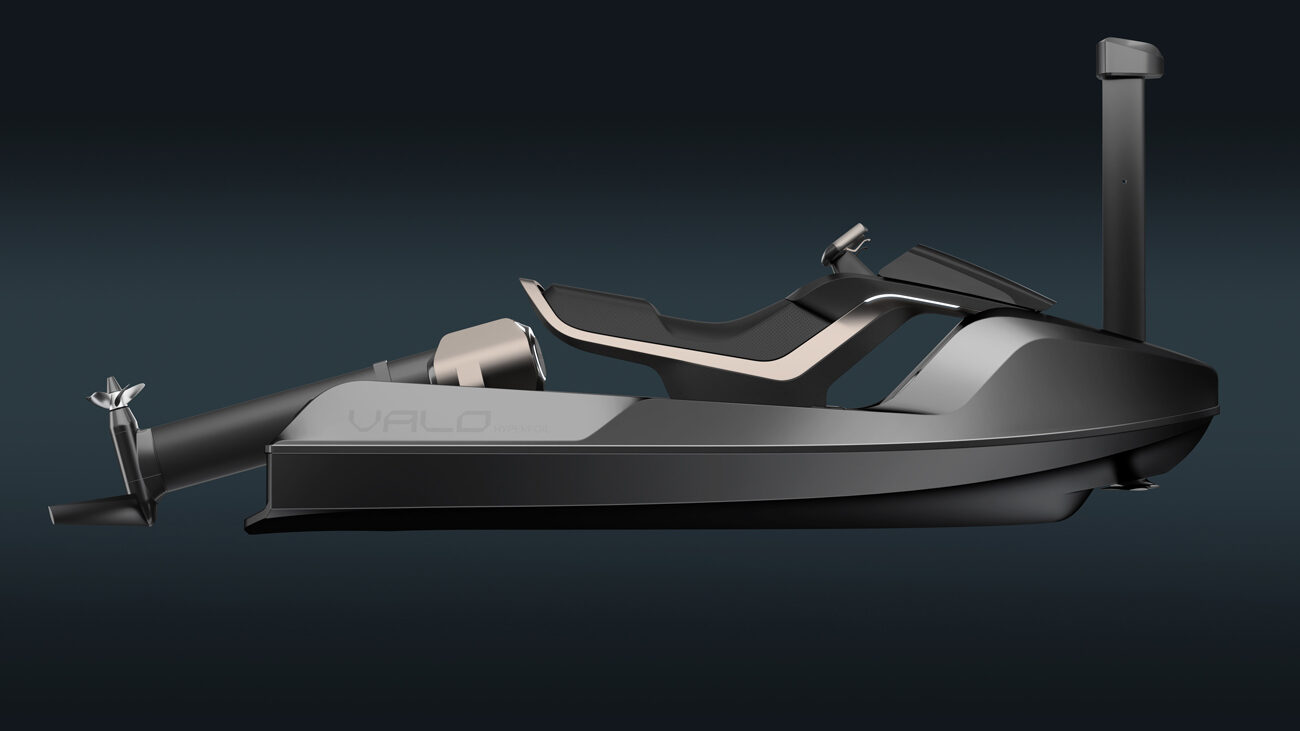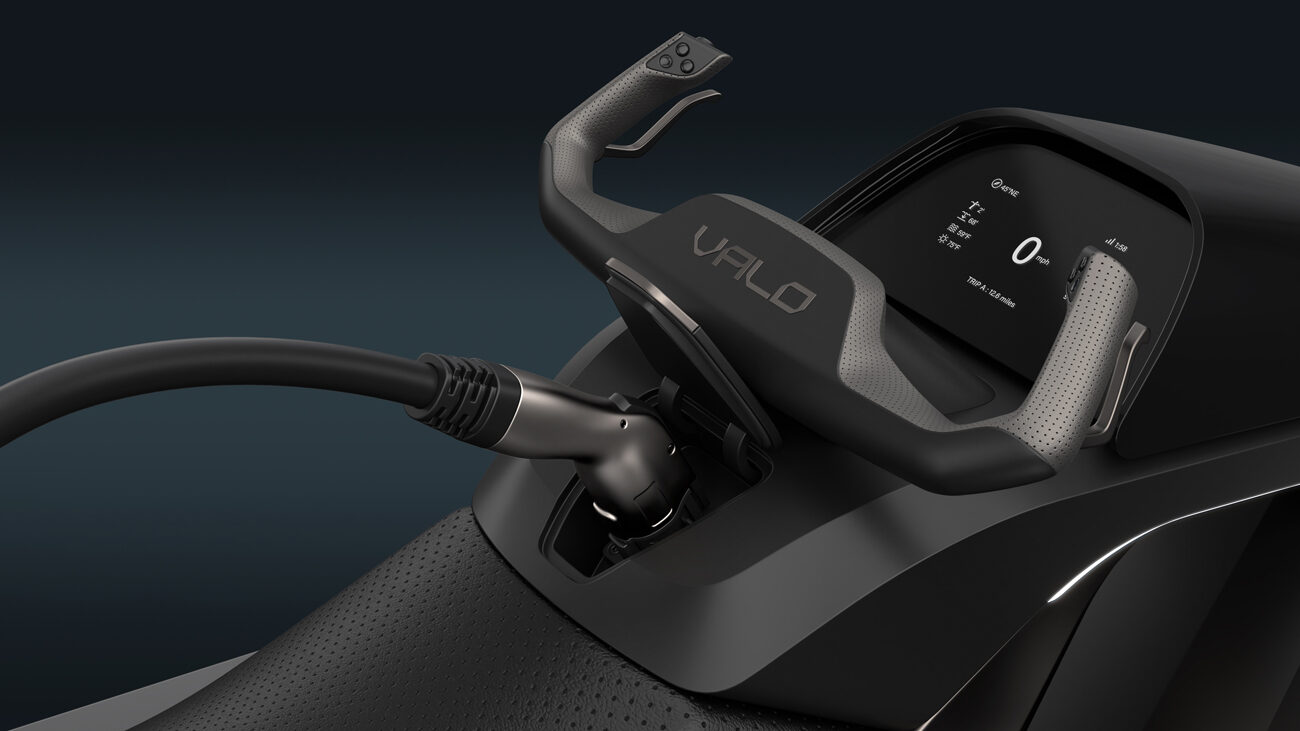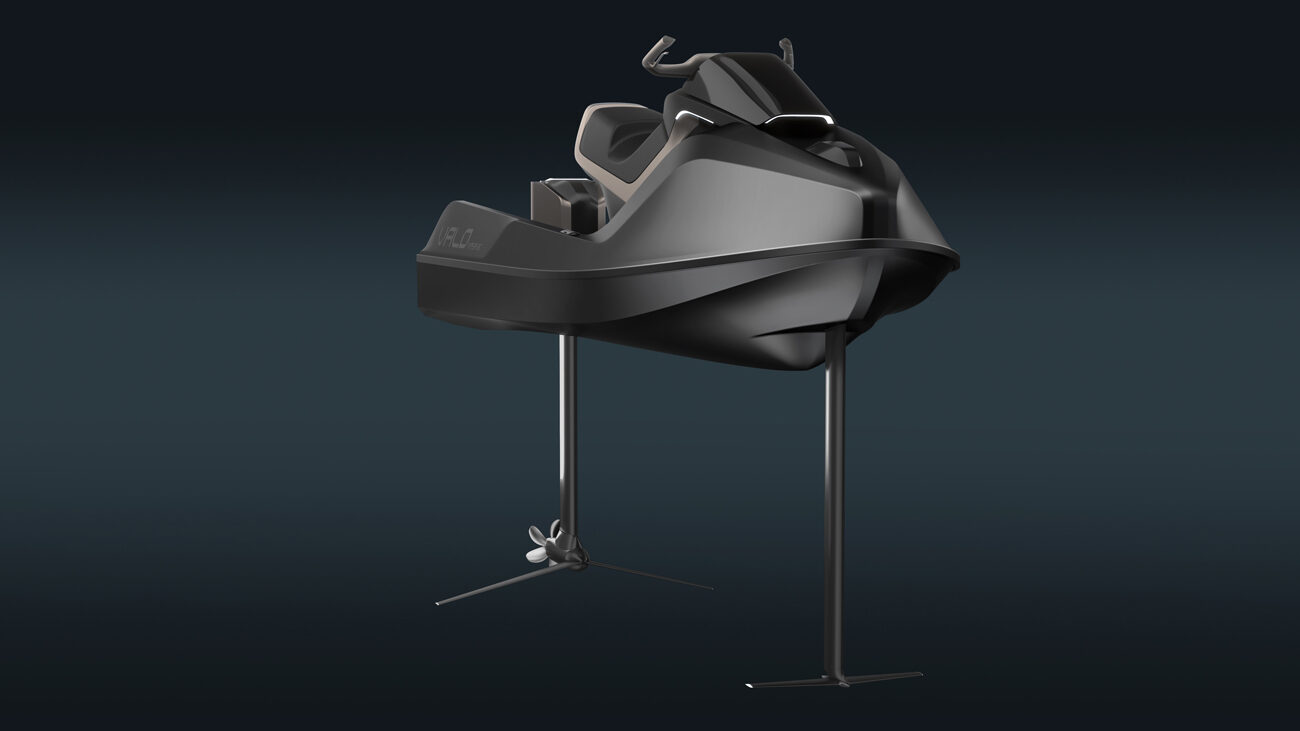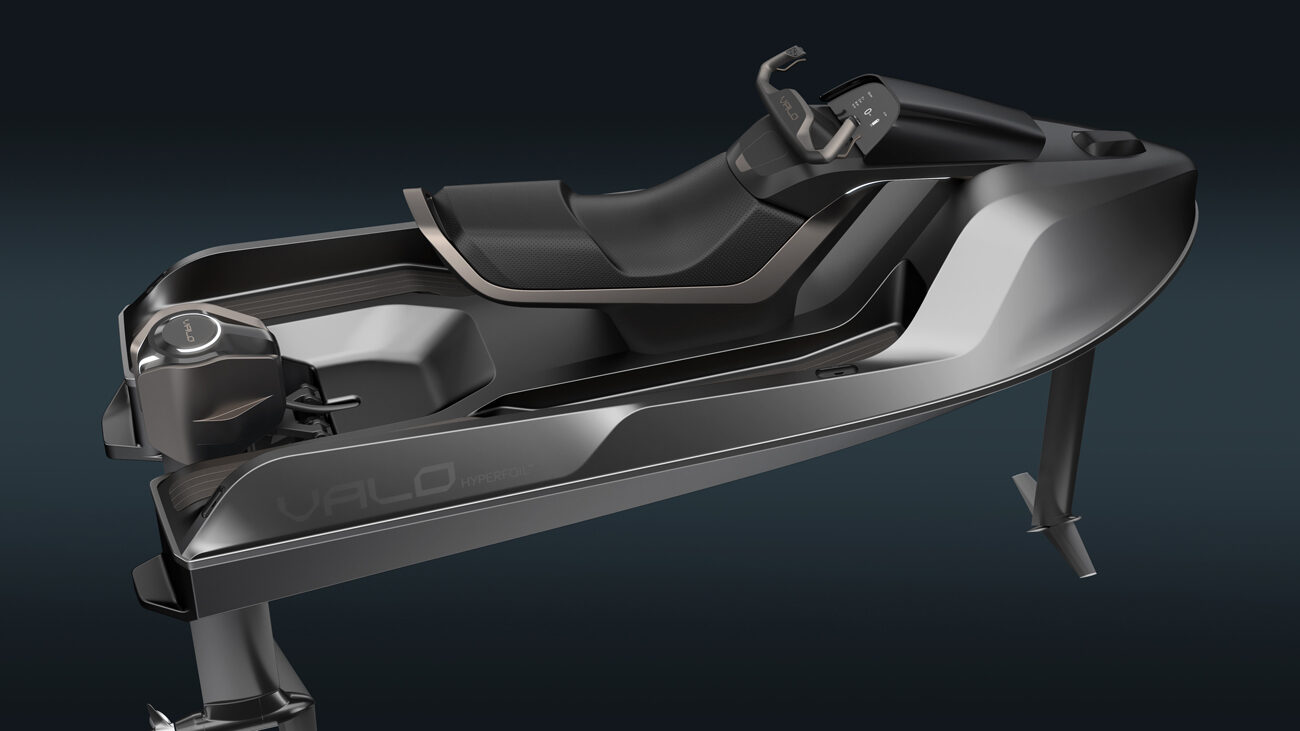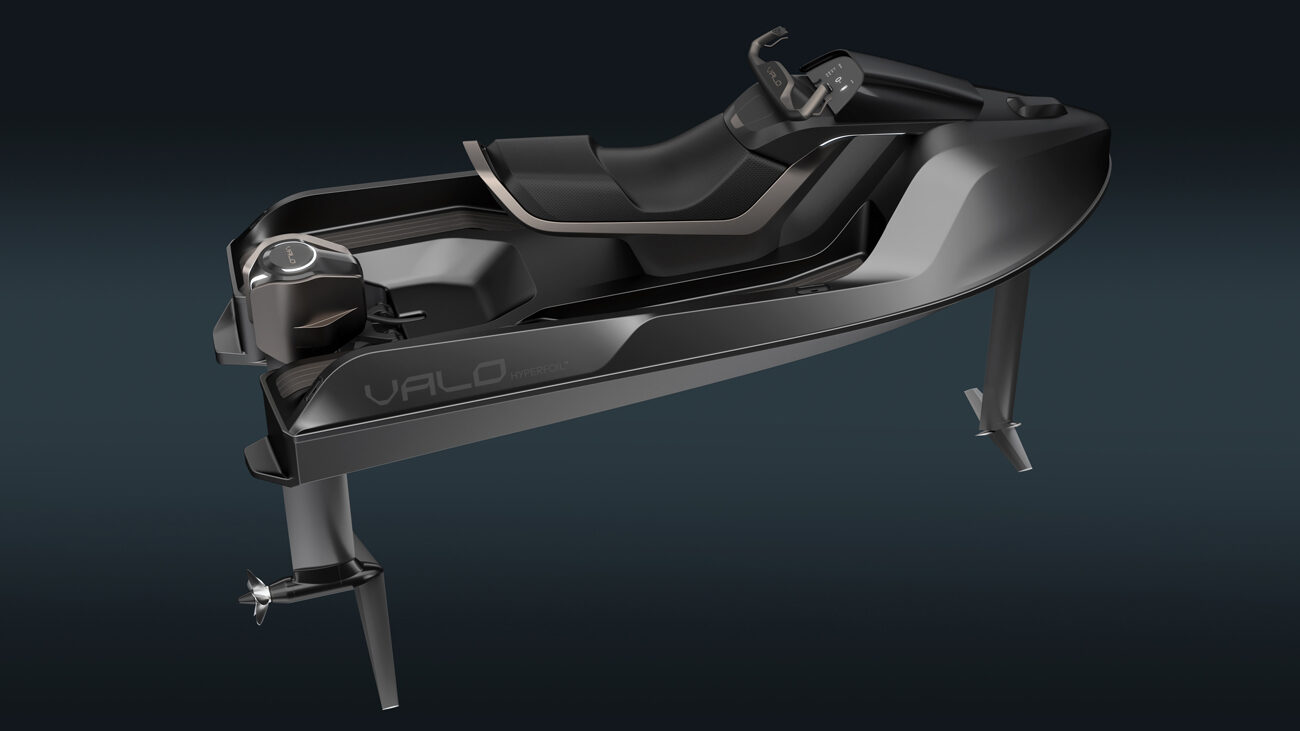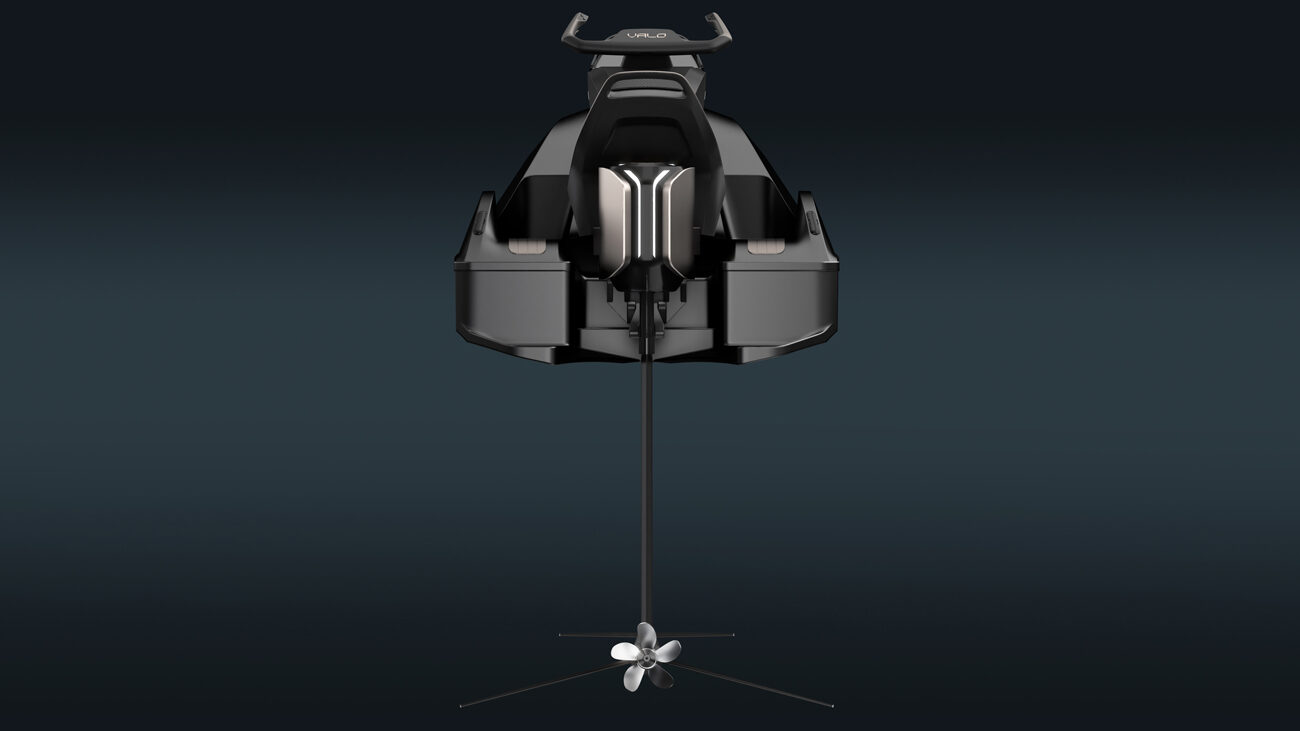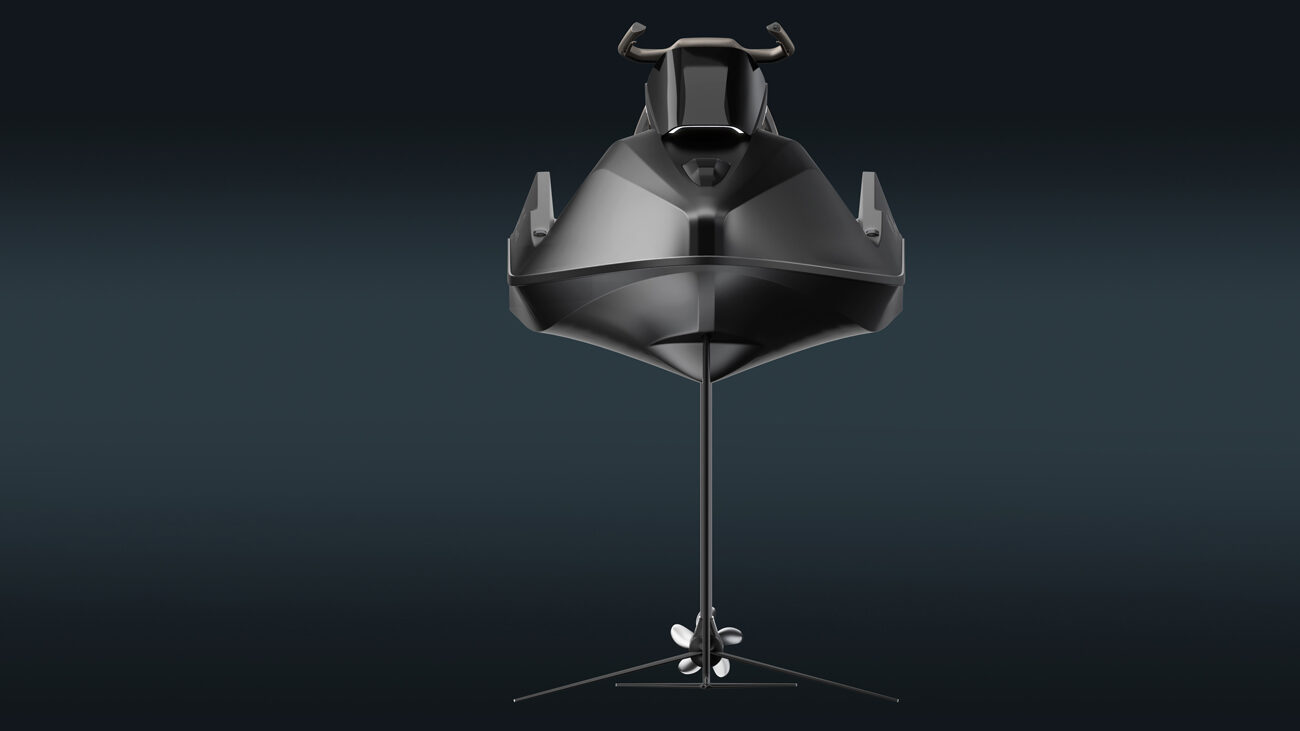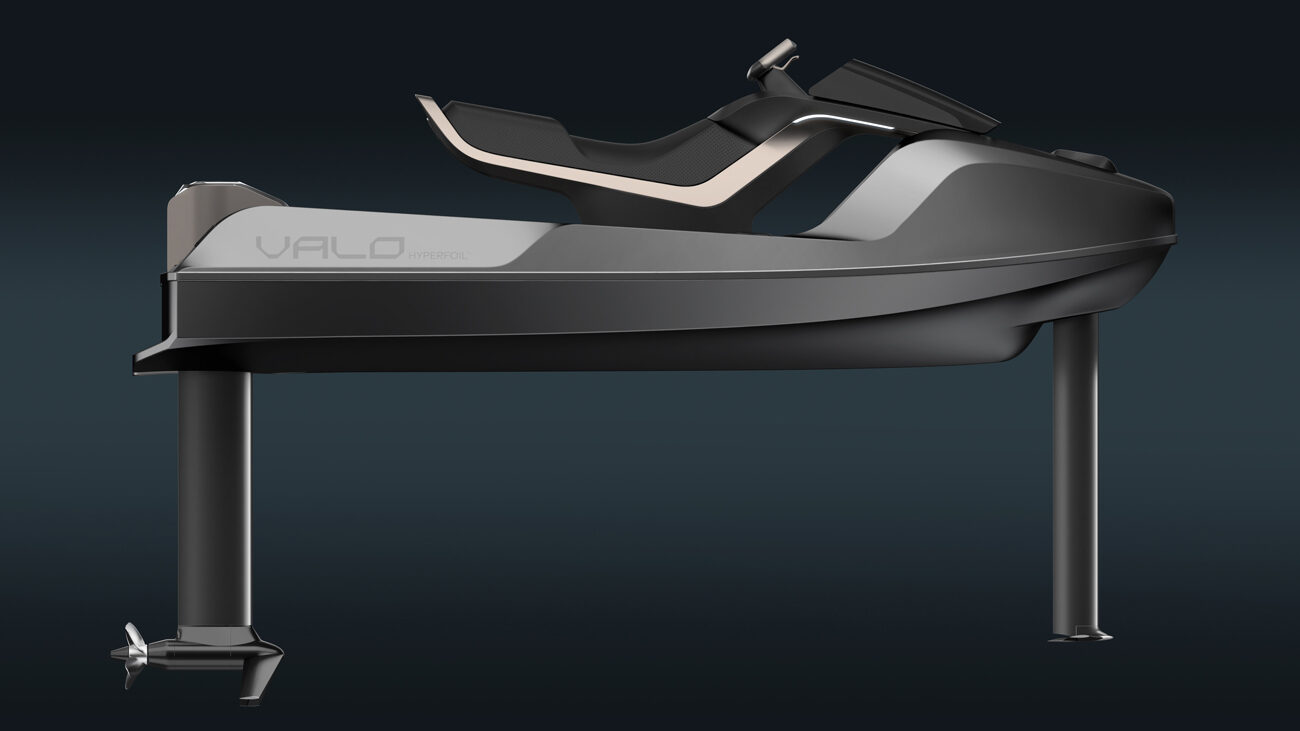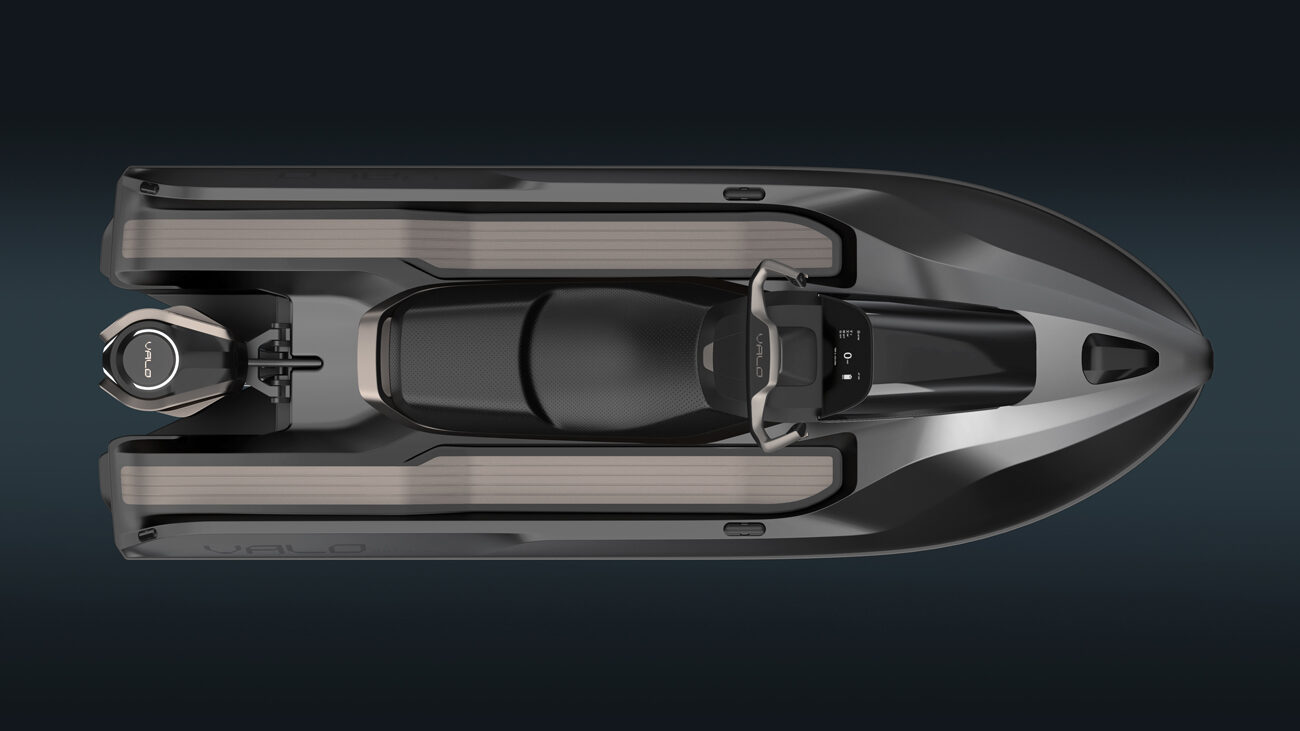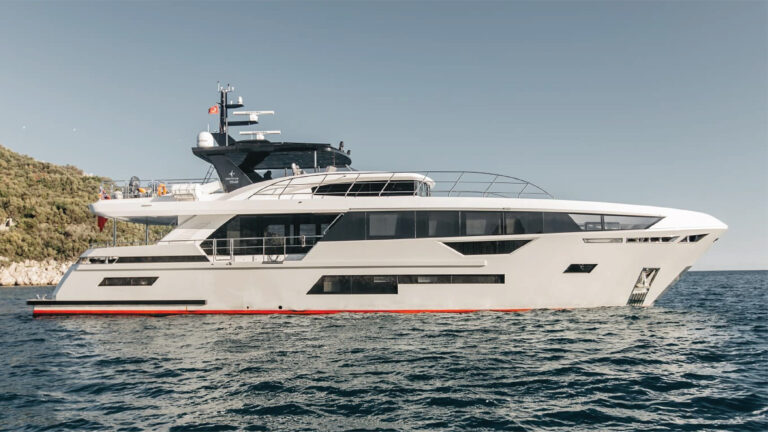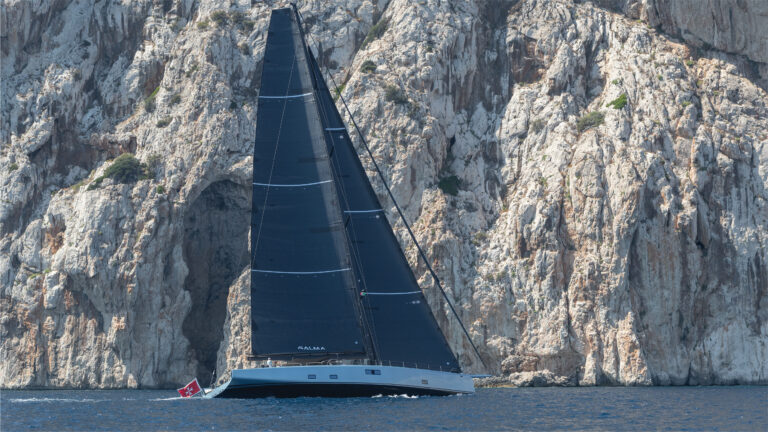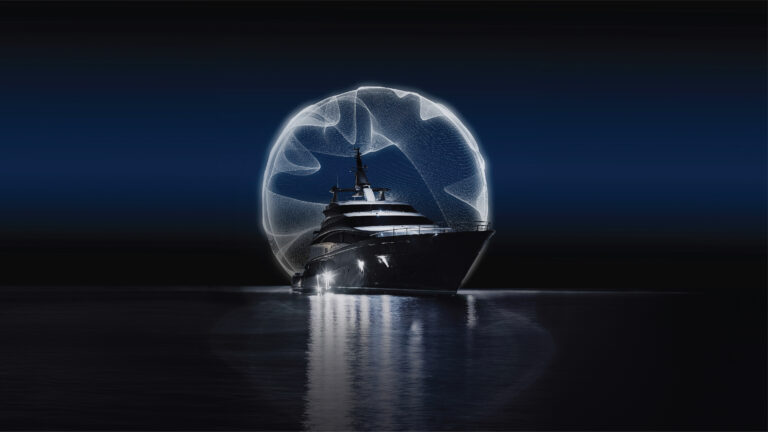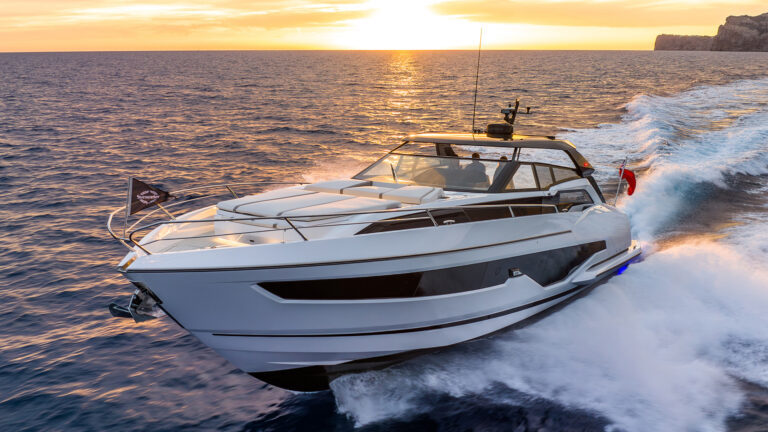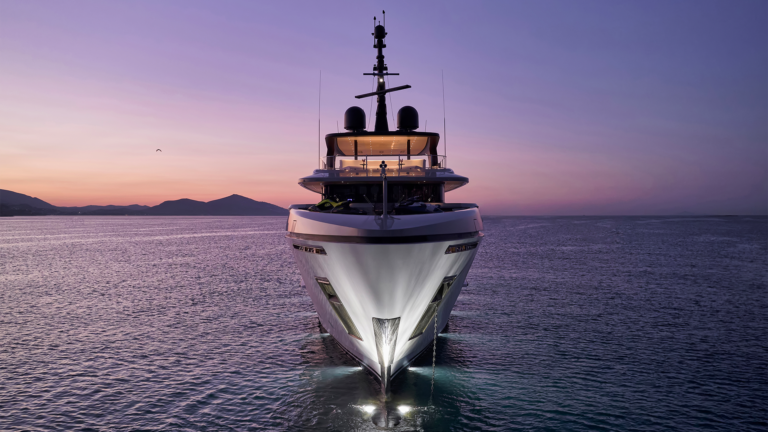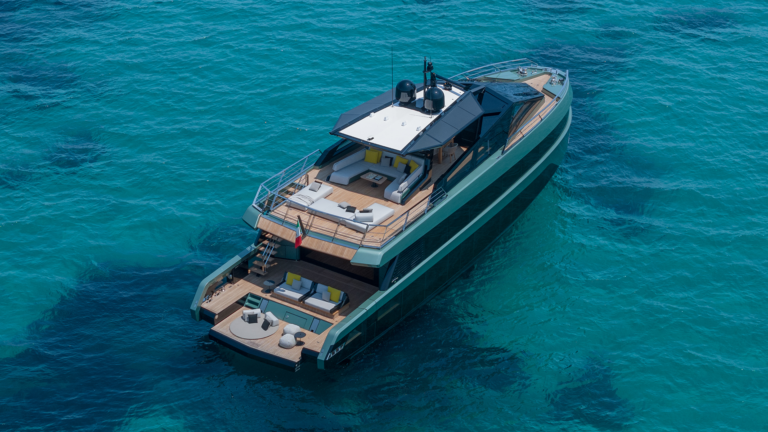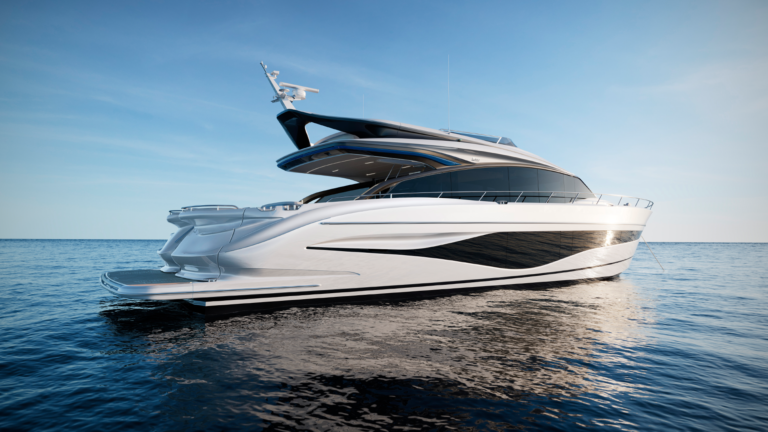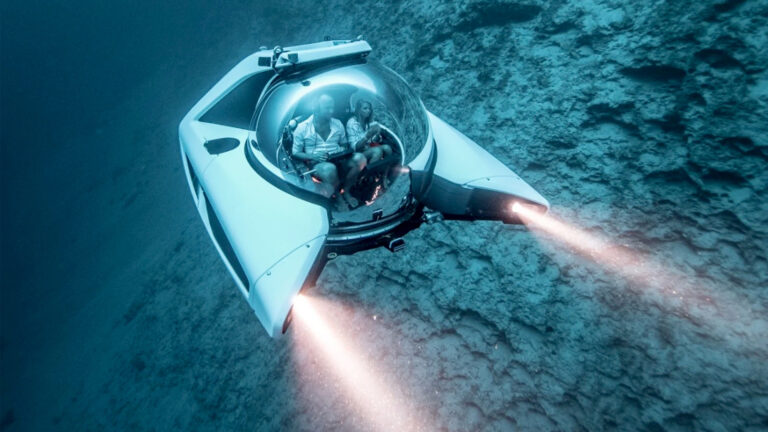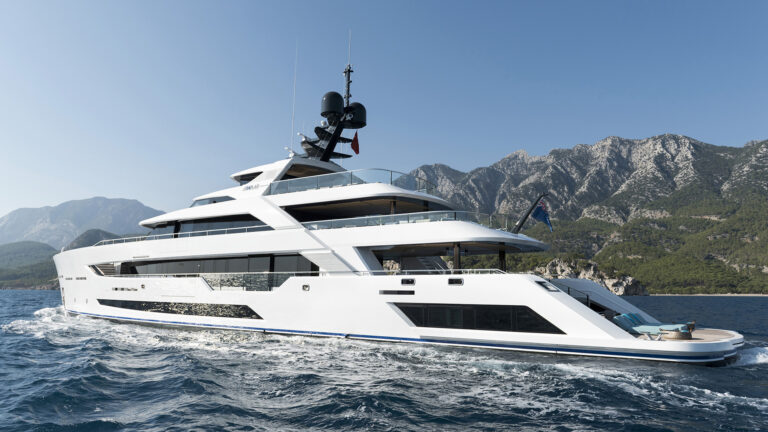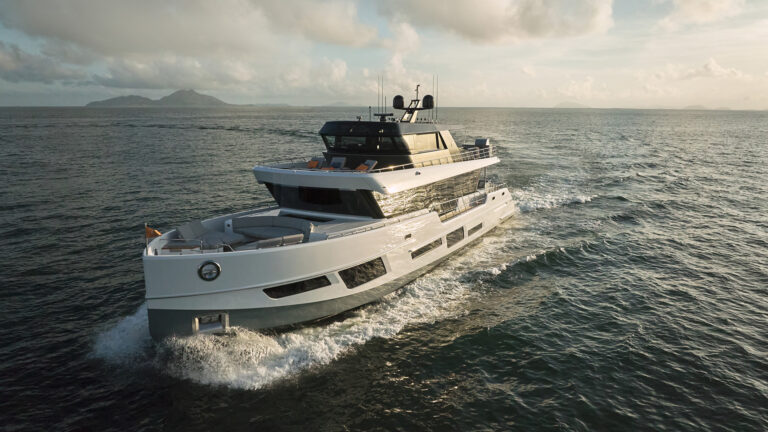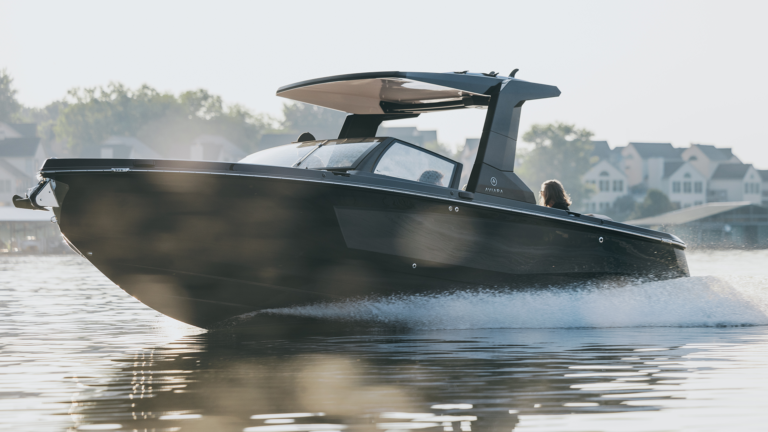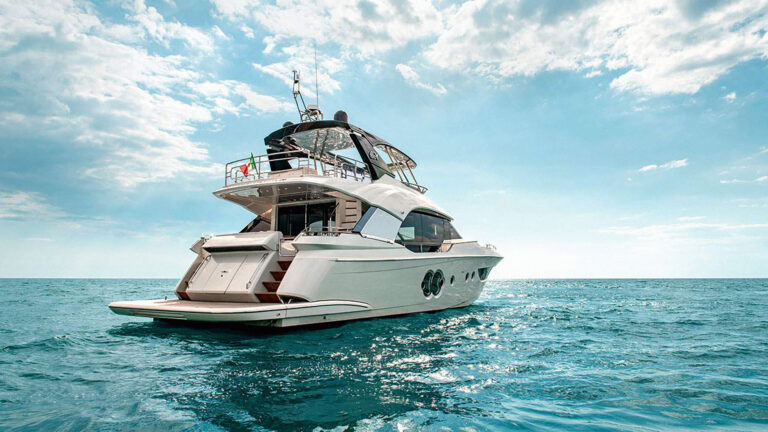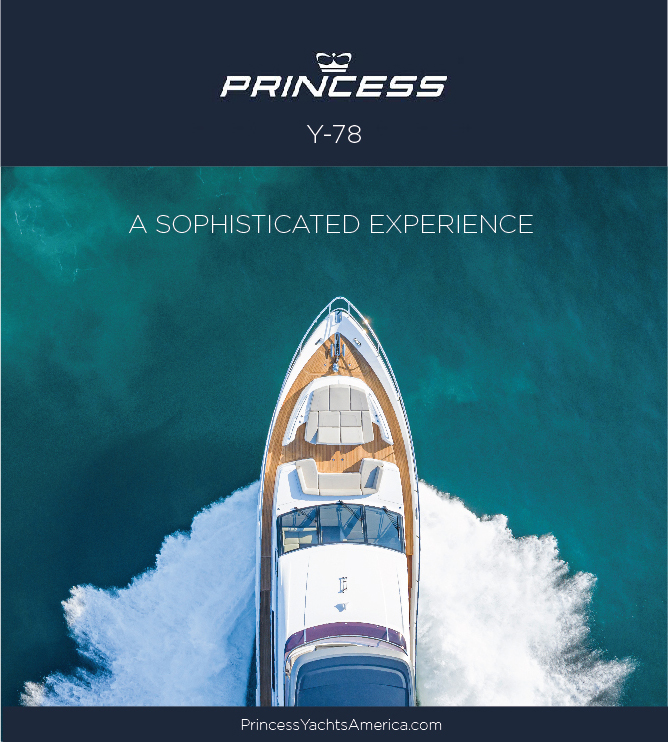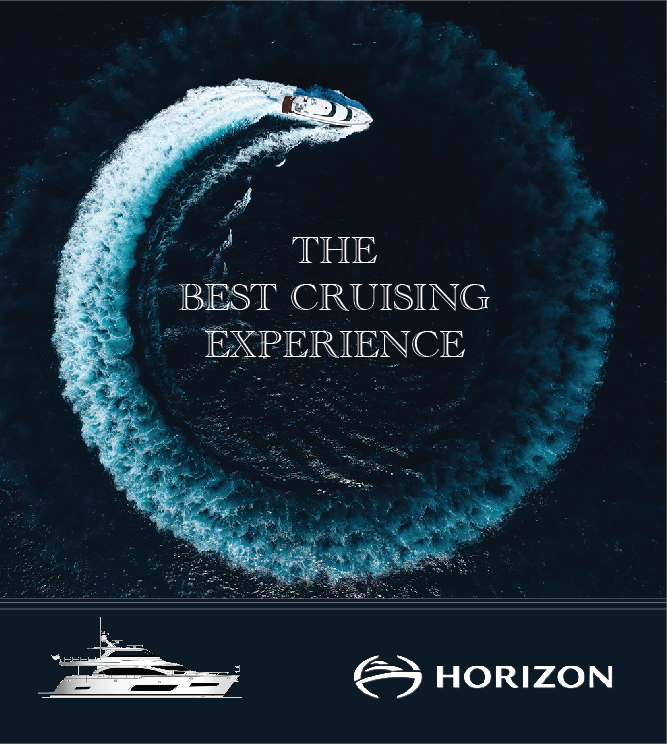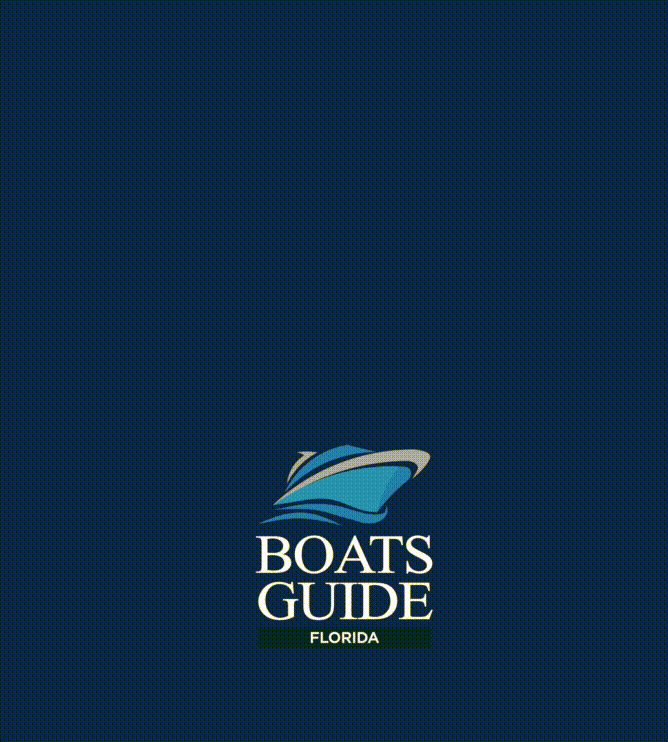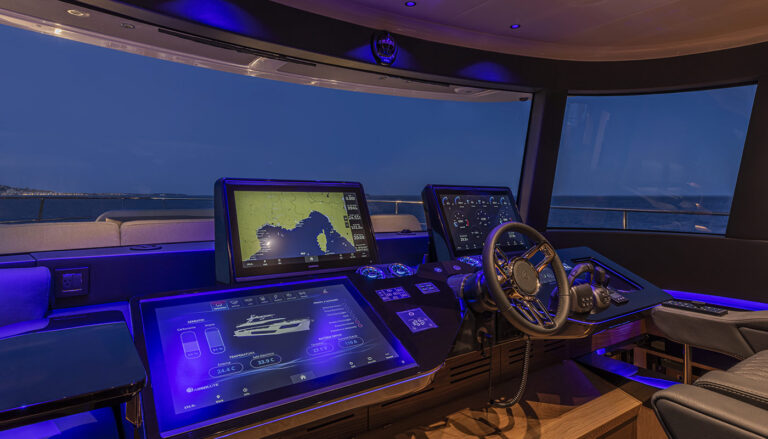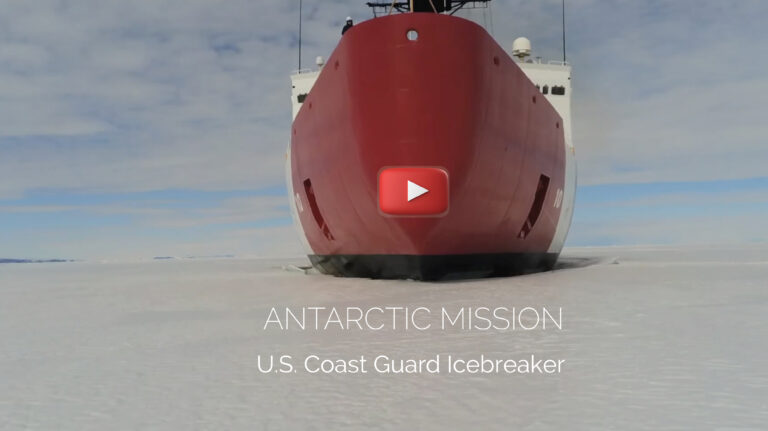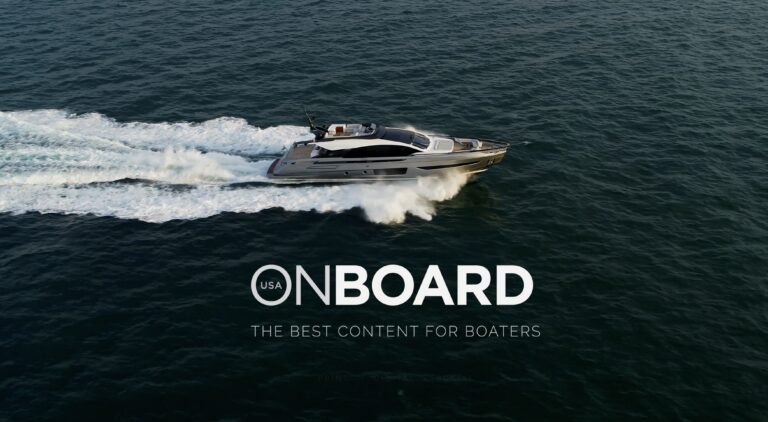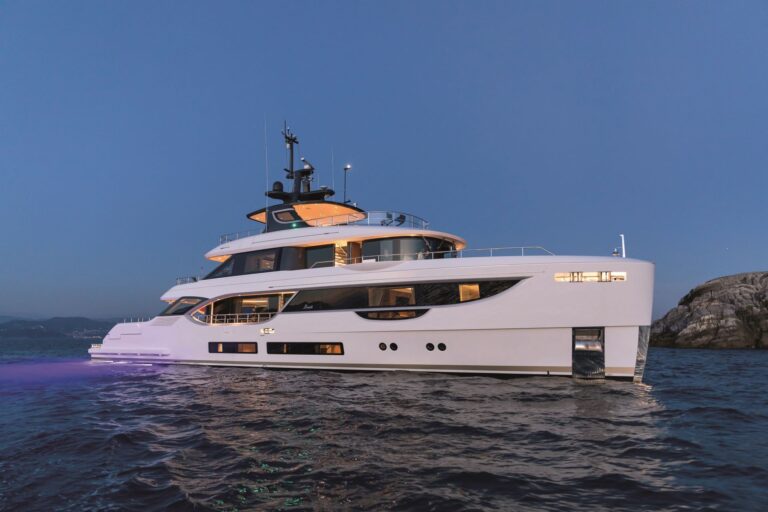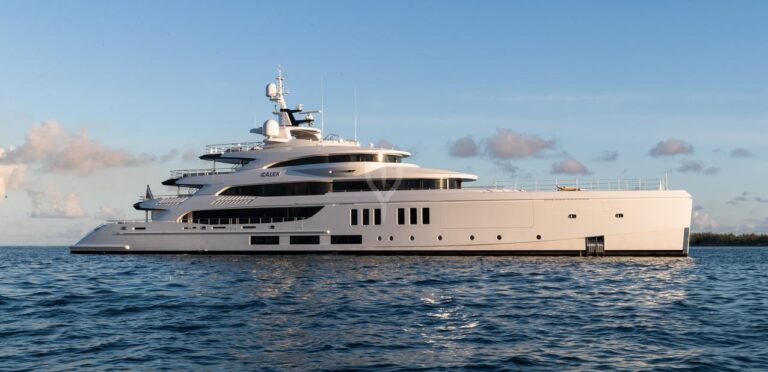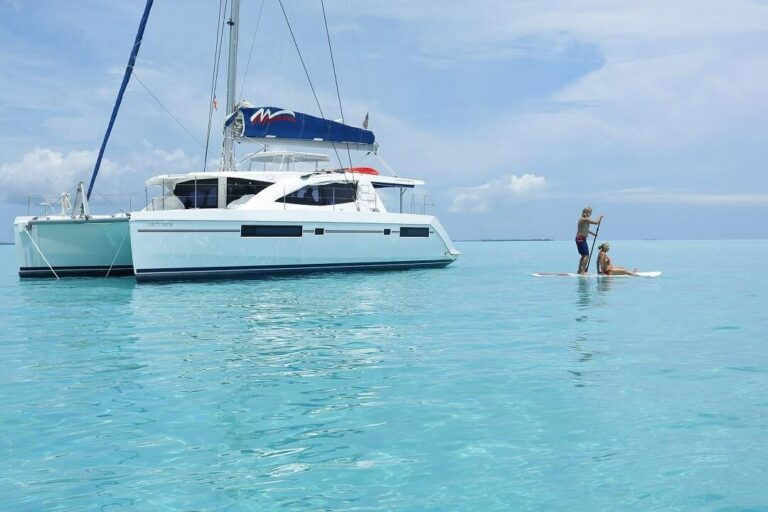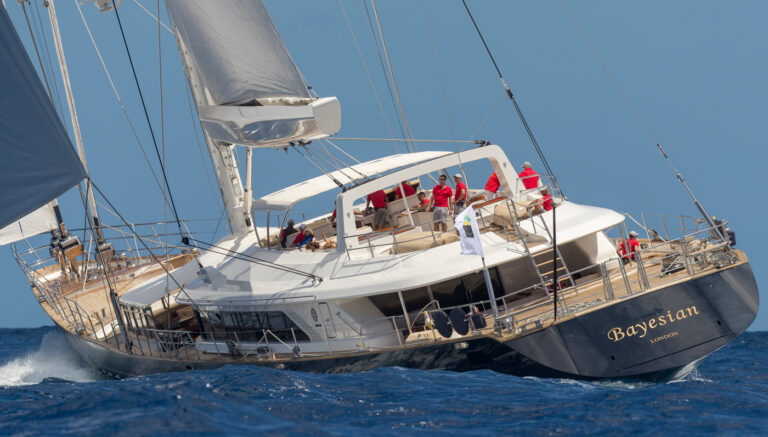The emerging technology company Valo has revealed details of its revolutionary new personal watercraft, the Valo Hyperfoil. This new product has seen immense consumer demand, selling out the presale of the first limited edition production built-in 2024. Mass production is scheduled for 2025, with pre-orders currently open.
It’s a dream that Ed Kearney, founder and CEO of the company, has had since childhood when his father showed him a video of an early hydrofoil. “I was about 12 or 13 years old, and my father, who was an inventor, showed me a video of some MIT students who had built a pedal-powered hydrofoil boat that broke the world speed record for a human-powered boat because it was very efficient,” says Kearney. “I remember wondering, why aren’t all boats like this? Here is a technology that can completely revolutionize the way we transport things on water, making them ten times more efficient and incredibly comfortable at the same time.”
With input from other industries and leveraging the experience of people like foiling naval architect pioneer Paul Bieker, who now serves as a consulting designer in Valo’s designs, they have led to the rapid development of the Valo Hyperfoil. The team, assembled in early 2023 by CTO Reo Baird, a tech entrepreneur and boating enthusiast who had previously been developing hydrofoil boats with Navier company, went from concept to prototype in just six months, showing not only the pace and flexibility of an agile startup but also demonstrating that the idea was based on solid principles of design and engineering.
Since then, the team has adjusted the design to further improve the sailing experience, moving to a dual foil canard system aligned at the bow and stern along the centerline, with the stern also housing the shaft-driven propulsion unit. The new design has resulted in a 33% reduction in strut drag compared to the alpha prototype, conferring improved stability and agility and an increased maximum tilt angle. Now, the anhedral (downward-tilting) wings provide 30% more roll and contribute to the improved maximum tilt angle.
At the heart of the Valo Hyperfoil’s performance is the shaft-driven propulsion system, which can propel the craft to a top speed of 35 knots, offering over two hours of autonomy and reaching over 60 miles on a single charge.
The Skyride system is developed in-house and keeps the vehicle stable while gliding through the water and waves. Hydrofoil vehicles are inherently unstable and difficult to control as their center of gravity is very high above the pivot point; it’s like walking on long stilts or riding a unicycle: balancing something weighty is difficult. Added to this is that the vehicle has to operate very close to the water surface without going too high or too low.
Skyride solves this by combining data from various sensors around the Valo Hyperfoil using algorithms derived from the aerospace industry to deliver hundreds of micro-adjustments per second to the various mechanical actuators that control the craft to keep it stable and agile.
“The Valo Hyperfoil is fully computer-stabilized, and when you turn, it enters what is called a coordinated banked turn,” explains CTO Reo Baird. “Think of it exactly like when a plane leans and turns; you don’t feel like you’re being pushed out of the turn and your coffee doesn’t spill because the forces run straight up and down through its vertical axis. That’s how the Valo Hyperfoil turns using the Skyride software, and it’s truly exciting, allowing for tight and very precise turns.”
The software also allows for various navigation modes: typical and sport, for example, while including complete safety features. “Sport mode is designed to offer much more excitement with sharper and more aggressive handling,” says Baird, “but there are also many safety elements at the limit to ensure it can’t capsize. The software has strong control over the stability of the Valo Hyperfoil but also allows the driver to feel like they are controlling the vehicle. It’s not like using cruise control in a car; it’s strongly linked to the pilot’s steering and throttle movements, but always maintaining complete stability to keep it safe.
The central philosophy of the Valo Hyperfoil is to make it as exciting and enjoyable as possible while focusing on reliability, robustness, and practicality. This means, in practice, that the construction is based on high-quality parts, from carbon fiber, titanium, and stainless steel for the body construction to the selection of very reputable suppliers for component integration: the battery system and electric motor, for example, are being sourced from experienced manufacturers in the U.S. and U.K., respectively.
In addition, the team has considered how the Valo Hyperfoil is likely to be used when designing key elements. Not only is the Valo Hyperfoil transportable on standard equipment, but it can also be beached like a conventional jet ski thanks to a raisable front canard.
Of course, the great contribution to sustainable navigation with zero emissions, noise, and wake stands out, meaning that Valo Hyperfoil pilots will be able to explore places that other personal watercraft cannot access. They can do so without disturbing others in the same area.
As Valo Hyperfoil moves towards mass production, with the delivery of the first Founder’s Edition models scheduled for 2024, the company is celebrating the pre-launch success of its creation: they have already taken over 3.3 million dollars in pre-orders. They are also advancing the development of a new range of products for boat builders so they can easily enter the era of electric foiling.
It’s clean, with zero emissions, zero noise, and zero wake; it’s fun because you can enjoy exciting sailing in a wide range of sea conditions; it’s safe and comfortable because the Skyride software takes care of everything; and it’s practical, because you can do everything and go anywhere a conventional jet ski can go, and more.
It’s the future, and it’s already here.
What is Foiling?
The hydrofoil is a navigation system created more than a century ago to take advantage of the laws of hydrodynamics to increase sailing speed. By reducing the boat’s contact with the water, they managed to lift the vessel to a point of equilibrium where it could move through the air.
It works exactly under the same concepts as an airplane. You have two wings, one at the front and another at the rear, as a stabilizer, creating high and low-pressure areas on the wing. Then, as it moves through the water and gains speed, it creates lift, just like an airplane.

